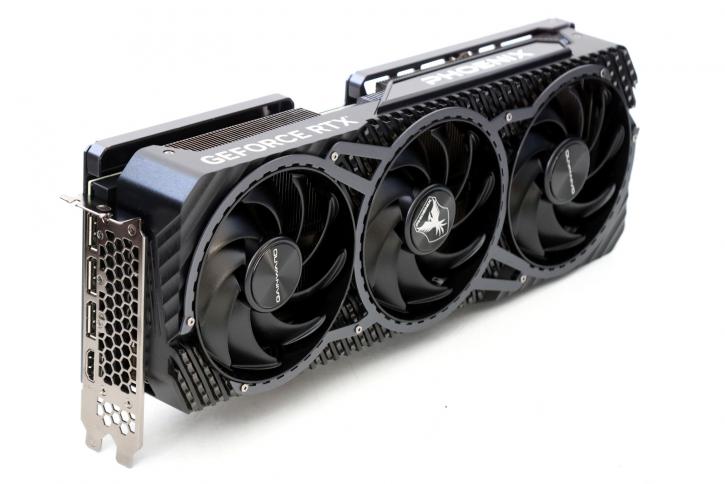Introduction
Gainward GeForce RTX 4070 Ti Phoenix GS 12G review
Next up is Gainward, who sent us the Phantom GS variant of the GeForce RTX 4070 Ti, which turned out to be a sweet offering. This Gainward graphics card runs at a slightly higher clock frequency but should be offered at a close to msrp pricing. Join us as we review the GeForce RTX 4070 Ti 12GB. Yeah no surprises here, that would be the product that was 4080 12GB that NVIDIA got cancelled en renamed into the 4070 series. The new graphics card provides greater performance at all fronts, more extensive raytracing features, and DLSS 3.0 thanks to upgraded Tensor cores. While we all had a reasonably dull year in terms of technology, 2022 is loaded with new releases. Among them were NVIDIA's ADA GPU architecture graphics cards for the consumer market. The company has unveiled its new GPU design for next-generation gaming PCs. In the short term, two or three variants of GPUs are expected in the first launch wave, each one will outperform the Ampere 3000 series somehow. NVIDIA's RTX 4000 GPUs will provide impressive performance, but next-gen graphics cards may have to contend with alternatives like AMD's rDNA3 and Intel's Arc Alchemist. Where GeForce RTX 4090 is Nvidia's flagship model in the new series, the GeForce RTX 4080 16GB took a step down. We're now in the first days of 2023 and NVIDIA released its 4070 Ti. The AD104 GPU powers the GeForce RTX 4070 Ti's 7,680 shader cores, which can generate an impressive 40 FP32 Shader-TFLOPS for rendering rasterized graphics, 240 Fourth Generation Tensor Cores, which can generate 641 Tensor-TFLOPS (with Sparsity) for AI processing and DLSS, 60 Third Generation Ada RT Cores, which can generate 93 RT-TFLOPS for driving next-generation ray-tracing The GeForce RTX 4070 Ti, like the rest of the GPUs in Nvidia's RTX 40 Series, features Ada technologies like Shader Execution Reordering (SER), the new RT core engines, and DLSS 3. The RTX 4070 Ti is the best graphics card for high-end gaming and content creation. Enjoy advanced RTX accelerations in the most popular creative software, premium NVIDIA Studio drivers designed for optimum stability, and a set of unique tools that tap into RTX's potential to facilitate AI-assisted creative workflows. First things first, NVIDIA is not launching a reference design (founder edition) ergo, only the board partners will release this card. The GeForce 4070 Ti thus. Initially, NVIDIA wanted to release two distinct GeForce RTX 4080 versions. A GeForce RTX 4080 12GB with GDDR6X RAM. Nvidia, however first announced a 16GB model of the RTX 4080. Due to market reception and confusion, NVIDIA removed that 12GB version from its deck of cards (which is now the 4070 (Ti)). The reference boost frequency is 2.610 GHz. This card has a 192-bit memory bus, 12Gb at 21 Gbps and a relatively okay tgp (total graphics power) of 285W.
Gainward is not a widespread known brand in the United States or Europe, but it has been around for a while and is manufactured by the same business that makes Palit graphics cards. Gainward returns to its roots with a pure dark appearance and giant three-fan and 3 slot cooling! It has 7680 shader cores and 12 GB of brand-new GDDR6X graphics memory. Gainward also developed the card with a semi-passive cooling mechanism; once the GPU heats up, the three fans start cooling. To give you an idea, we measured only 35 DBa in our acoustic testing. The manufacturer slightly increased the power limit as well as the turbo frequency. This card is quick thanks to its 2760MHz clock speed (boost), enhanced power limiter, and frequency. When we tweak it, it reaches close to 3.0 GHz. The memory actually operates at a rate of 21 Gbps. With these specifications and other high-end components in mind, let us start this review, shall we?


